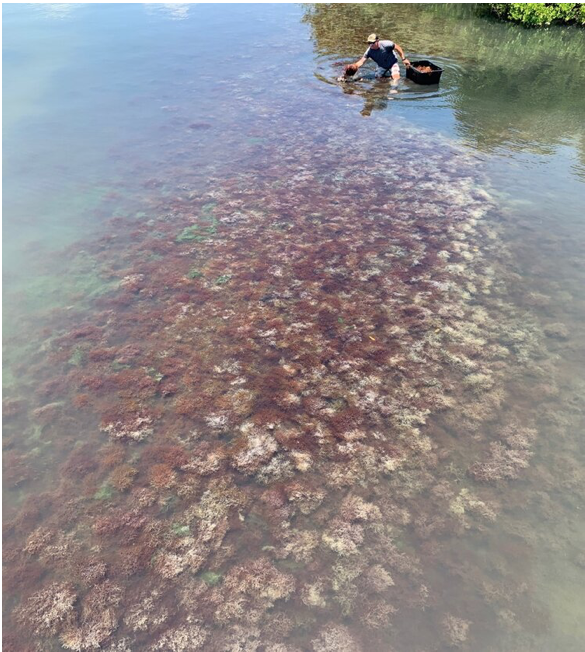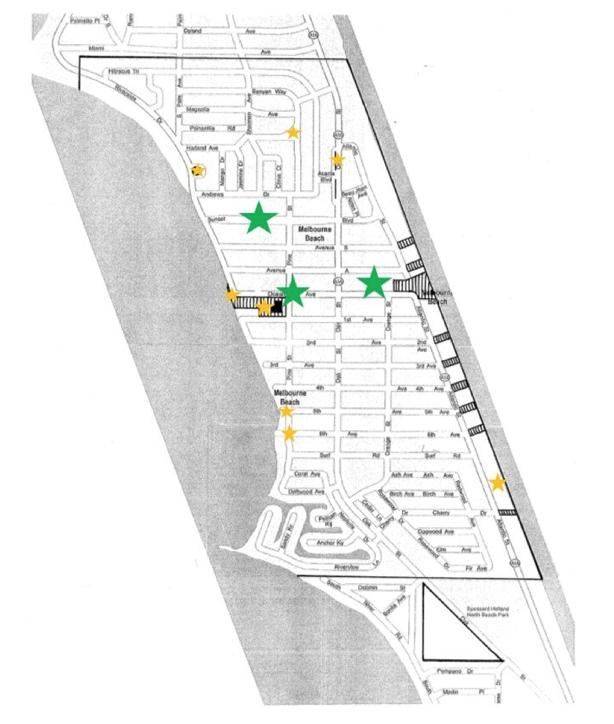5 Projects Prepping Seniors for Careers in Ocean Engineering and Marine Sciences
The university’s flagship project and a Panther rite of passage, the engineering and science student design and research program has existed in some form or another almost since the university’s inception in 1958.
A multidisciplinary capstone project for all science and engineering seniors, student design is a yearlong course in which students bring a project from concept to completion, simulating a real-world work environment and culminating in the Northrop Grumman Engineering and Science Student Design Showcase, where teams present their work and field questions from peers, faculty, industry professionals and local leaders.
Due to the COVID-19 pandemic, this year’s seniors, like the rest of the world, had to adapt to unforeseen challenges, like in-person class cancellations and short-notice closure of the L3Harris Student Design Center. While most students’ projects look a little different from how they had envisioned them at the beginning of the year, we are proud to continue the tradition of showcasing them to their peers, community and, most important, prospective employers through the Northrop Grumman Virtual Student Design Showroom.
Prepare to be impressed—the showroom hosts descriptions, photos, video presentations, display boards and more for the more than 100 projects completed this year.
Here we’ve compiled a list of
5 Projects Prepping Seniors for Careers in Ocean Engineering and Marine Sciences
1. Macro-Algae Removal in the Indian River Lagoon

The Indian River Lagoon stretches along 40% of Florida’s east coast. It is highly important not only to the environment, but also to the economy, generating more than $7.6 billion per year for the state.
Knowing the health of the lagoon is so vital, this team of Florida Tech students dedicated its student design and research project to creating a more sustainable environment for marine life in the Indian River Lagoon.
The team did this by developing a process to safely remove algae and purposefully dispose of the biowaste without harming the organisms that use the algae for their habitat.
“This was a tedious process that involved removing the organisms without harming them. This process began by running elementary tests on the algae to better understand it and its inhabitants. After running these tests, a method of removal was derived through building a separation apparatus.”
Learn more about the project’s methods and results.
Team Members
Nicole Wisor (team lead), Thomas McDowell, Blake McNeal, Andrew Snyder
Faculty Advisor
Robert Weaver, associate professor, ocean engineering and marine sciences
2. Developing Equipment for Safer Scuba Diving
Exploring the depths of the ocean can often lead one into some questionable or unsafe areas. Knowing this, a group of six ocean engineering students set out to build diver equipment that would mitigate this kind of risk for divers.
The product members developed is called Diver Operated Vehicle Equipment (DOVE). The DOVE is designed to be a one-handed, water-resistant controller for scuba divers.
“Taking advantage of access to a Remotely Operated Vehicle (ROV) the team chose to modify a pre-existing controller they bought from DeepTrekker to adapt to the new parameters. The controller was taken apart and the interior components were repurposed. The buttons and joysticks were rewired and inserted into a new water resistant housing the team made out of acrylic.”
Learn more about the project’s methods and results.
Team Members
Theresa Wainwright (team lead), Brian Rhodes, Keenan Migliori, Kevin Richardson, Tristan Friendshuh, Matt Schelhorn
Faculty Advisor
Stephen Wood, ocean engineering program chair, ocean engineering and marine sciences
3. Developing a Green Infrastructure Plan for the Town of Melbourne Beach

Coastal communities face a unique set of challenges: rising sea levels and stormwater flooding issues, which lead to contaminated runoff impacting the Indian River Lagoon.
Working with the Town of Melbourne Beach, this student design and research project helped to create a plan to better manage stormwater.
“Our goal was to identify tools to assist these efforts and develop a green infrastructure plan.”
Through this work, three locations were identified within Melbourne Beach that could be effective sites for future green infrastructure projects. Potential improvements to existing infrastructure was also presented at a Town of Melbourne Beach public meeting.
“The final project report will identify ways that the town can improve existing infrastructure to reduce the impact of stormwater with financially viable options and sites. Efforts to secure project funding are essential to next steps.”
Learn more about the project’s methods and results.
Team Member
Zarya Dahl
Faculty Advisor
Ken Lindeman, professor, ocean engineering and marine sciences
4. The Relationship Between Environmental Background Colors and Seahorse Color Patterns

Wild seahorse populations have been on the decline due to the ornamental aquarium trade (OAT) and traditional Asian medicine, as there is a continuous demand for new and unique seahorse phenotypes (e.g., color patterns). In an effort to shift the OAT demand from wild populations to select aquaculture populations, this student project explores the development of unique phenotypes through experimental aquaculture.
The question: Does background color (light and substrate) affect the color development of lined seahorses?
“The results revealed that early life exposure to different background colors significantly affected the RGB color development of lined seahorses. Future studies exploring the physiological mechanisms by which this process occurs can help to develop specific aquaculture projects to maximize this method.”
Learn more about the project’s methods and results.
Team Members
Eagle Richter (team lead), Eric Rasmussen
Faculty Advisor
Ralph G. Turingan, professor, ocean engineering and marine sciences
5. Sustainability Action Plan for the City of Palm Bay

The rise of a city’s population naturally leads to a rise in demand for city resources. With this type of growth, it becomes more important than ever for cities to improve infrastructure and run sustainable operations.
Knowing this, the City of Palm Bay worked with a Florida Tech student to build a sustainability action plan for the city.
The main project goals were to perform planning duties for the city’s Sustainability Board, develop the plan elements and finalize it for approval in summer 2020.
“The framework of the plan being developed outlines opportunities and recommendations under five primary categories (Elements) agreed upon by the Sustainability Board and lead city staff. This process has allowed the identification of a hierarchical structure of terms, development of action plans, and implementation processes for each indicator.”
Learn more about the project’s methods and results.
Team Member
Richard C. Murlin II
Faculty Advisor
Ken Lindeman, professor, ocean engineering and marine sciences
Impressed and ready for more? Check out:
- 5 Projects Prepping Seniors for Careers in Computer Engineering and Sciences
- 4 Projects Prepping Seniors for Careers in Aerospace, Physics and Space Sciences
- 2 Projects Prepping Seniors for Careers in Mathematical Sciences
- 4 Projects Prepping Seniors for Careers in Biomedical and Chemical Engineering/Sciences





